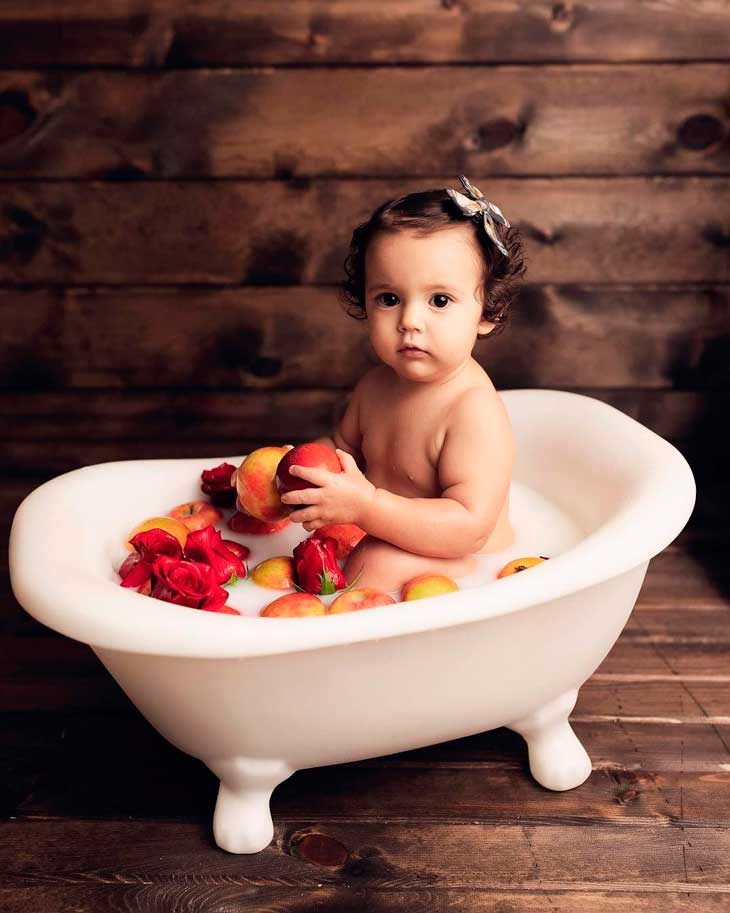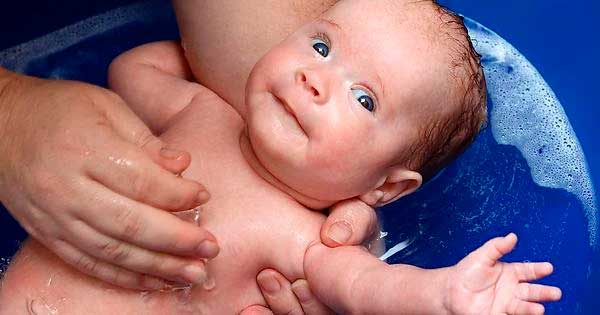Do you realize the responsibility of being a parent? Yes, you will have to feed and put your child to bed, and you will also have to bathe him/her.
This process is not really difficult, but it requires special concentration and certain conditions. Actually, it is crucial to ensure that this procedure is safe and satisfying for your little one.
One of the primary elements that determine an excellent and enjoyable baby bath is the water temperature. It should not be too hot or too cold.
So, what temperature is most favorable for children? Don't worry, we know how to give a bath to a child in an acceptable way! Keep reading to find out many insightful tips and expert advice to make your baby's bath time an entertaining and lovely adventure.
Understanding a baby's delicate skin

First of all, the main reason why the temperature of water is such an important factor for babies is the delicate nature of their skin.
Actually, a baby's skin is remarkably thinner compared to an adult's, which makes it highly sensitive to temperature extremes. They sense different temperatures more acutely than older people.
In other words, what might feel comfortably warm for an adult could be scalding for a baby. Therefore, striking the proper balance in water temperature is of utmost importance. Now, let's move on to the key information.
The Goldilocks temperature

So, what's the perfect bathwater temperature for your baby? Most experts advise maintaining a bath temperature between 98.6°F and 100.4°F (37°C and 38°C).
For newborns, erring on the lower side, around 98.6°F (37°C), is preferable. This range not only guarantees safety but also helps your baby feel calm and relaxed, possibly reminiscent of the cozy environment they experienced in the womb. Aim for this temperature every time you bathe your child.
How to achieve the ideal temperature?

Now that we know the recommended temperature range, let's explore how to achieve it reliably. Here are a few major steps:
-
Testing the waters Always draw the bath for your baby and check the water temperature before gently placing them in it. An effective way to gauge the temperature is by dipping your hand or elbow into the water. Alternatively, you can use a specialized bath thermometer designed specifically for babies. Some of these thermometers come in playful shapes, doubling as entertainment for your little one. Choose the one you prefer!
-
Avoid “surprises” Please, never turn on the tap or add water while your baby is already in the bath. Sudden bursts of hot water can lead to burns, and we certainly want to prevent that.
-
Recommendation of the WHO The World Health Organization suggests lowering the temperature in hot water systems to minimize burn risks. A water temperature of around 122°F (50°C) is considered ideal. In the next tip, we will explain how to reach the necessary temperature.
-
Mix water right When filling the bath, start with cold water and gradually add hot water to attain the desired temperature. When it's time to turn off the water, reverse the order by turning off the hot water first. This action ensures that cold water runs through the tap, preventing any accidental scalds.
Creating a safe bathing environment
In addition to getting the temperature right, there are several other factors that can contribute to a pleasant bath for your baby:
a) Warm and cozy Ensure the bathroom is warm and draft-free. Consider using a space heater if necessary. This ensures your baby won't get chilly during the bath.
b) Never leave a baby unattended This cannot be stressed enough—never leave your baby unattended during bath time. If you need something from another room, take your baby with you. Older children should also not be left in charge, as they might not fully grasp the concept of danger.
c) Preparation is key Prepare in advance. Have all the necessary supplies ready before you start the bath, so you don't need to scramble. This includes a fresh towel, baby soap, washcloth, etc. Consider what other items you might need.
d) Engage and reassure Talk to your baby soothingly throughout bath time. This not only helps them stay calm but also supports their language development. In this way, your child will not feel stressed or disgruntled.
Equipment for baby bathing

You don't need a plethora of expensive equipment to give your baby the best bath. Here are the essentials:
-
Bathtub, baby bath, or sink Depending on your preference and space, choose a suitable bathing vessel for your baby.
-
Soft washcloth A gentle washcloth is essential for cleaning your baby's delicate skin.
-
Mild, fragrance-free baby soap Opt for soap specifically designed for babies, as their sensitive skin can react to harsher products. The wrong soap can be harmful.
-
Towel Choose a soft, absorbent towel to wrap your baby in after the bath. Additionally, you might find some nonessential items helpful, such as a bath support, water thermometer, jug, or a hooded baby towel for added comfort and convenience. However, these are just bonuses.
In conclusion
In the grand scheme of parenthood, bath time might seem like a minor routine, but it's a cherished opportunity for you to connect with your baby.
When you're confident that the bathwater is within the recommended temperature range and you're following safety precautions, you can transform this daily task into a joyful experience for both you and your child.
Neither of you will feel pressured. Remember, this process should be approached with love and care. So, draw that warm bath, engage in playful splashes, and create wonderful memories, all while ensuring your baby is cozy in the ideal bath temperature of 98.6°F to 100.4°F (37°C to 38°C).


